Type array in Java is a technique explained within the java.util.Arrays elegance. Because the title signifies, it comes in handy in sorting an array in ascending or descending order. On this Complete Stack Program, you’ll be able to be informed extra about what an arrays.type() is, and easy methods to use type array in Java.
Sorting arrays in Java is key for organizing information successfully. Whether or not it is sorting numbers, strings, or customized items, mastering sorting algorithms is a very powerful. Sign up in a Java Route to delve into more than a few sorting ways and raise your programming skillability.
What’s Arrays.type() in Java?
The Arrays are a category from the java.util bundle that gives the pre-defined type() approach. This can be a static approach that returns no price. While you invoke the type array in Java, it parses via each and every component of an array and types it in ascending or descending order as specified. The array may also be of more than a few information sorts, together with int, lengthy, char, and drift. The overall syntax of the Arrays.type() approach is:
public static void type(int[] ar, int from_index, int to_index)
Within the above syntax:
- ar: It’s quick for the array title
- from_index: An non-compulsory parameter that marks the index (inclusive) of the component the place the sorting starts
- to_index: An non-compulsory parameter that denotes the index (unique) of the component the place the sorting ends
Because you now see what the Arrays.type() approach is, let’s take a look at an instance for example easy methods to type an integer array in ascending order and perceive this idea higher.
Instance: Type an Array in Java in Ascending Order
Within the instance under, you will have to outline an array named ar with ten integer values. Then, you can use the Arrays.type() technique to type it. That’s how you’ll be able to type an array in Java in ascending order the usage of the Arrays.type() approach.
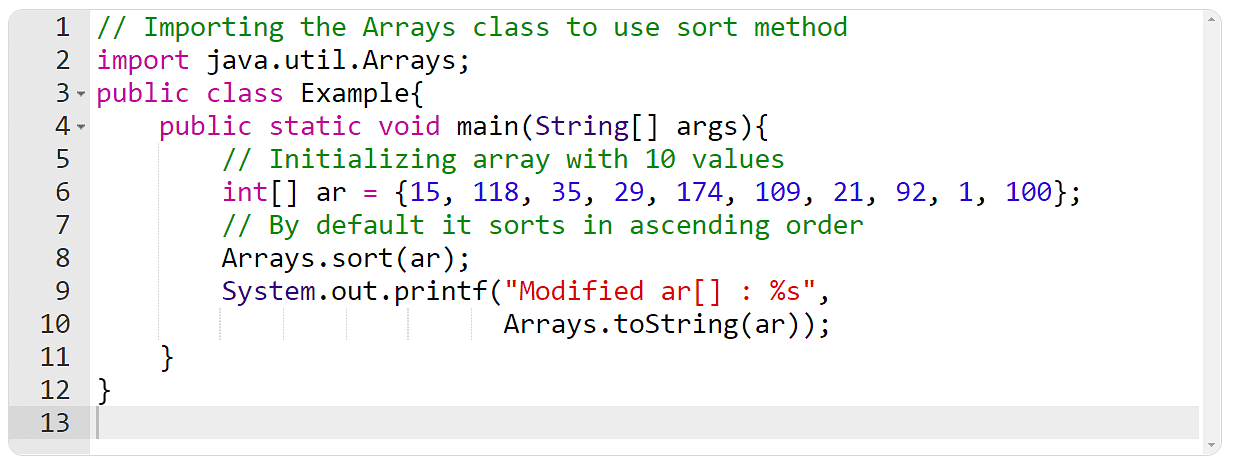

What Are the Different Techniques to Type Arrays?
Like sorting an array in ascending order, you’ll be able to additionally type it in different ways and kinds, equivalent to sorting integer array in descending order, a sub-array, and strings in alphabetical order.
Instance: Type the Array in Java in Descending Order
To type an array in Java in descending order, it’s a must to use the reverseOrder() approach from the Collections elegance. The reverseOrder() approach does now not parse the array. As a substitute, it’ll simply opposite the herbal ordering of the array. It approach that you’re going to first use the type array in Java to type it in ascending order after which opposite it with the reverseOrder() approach. Yet another factor value noting is that the Collections.reverseOrder() does now not improve primitive sort. Therefore, you will have to use “Integer” as an alternative of “int” to outline the integer information sort array. You’ll see it in motion within the under instance, the place you can use the similar integer array you used in the past and type it in descending order.
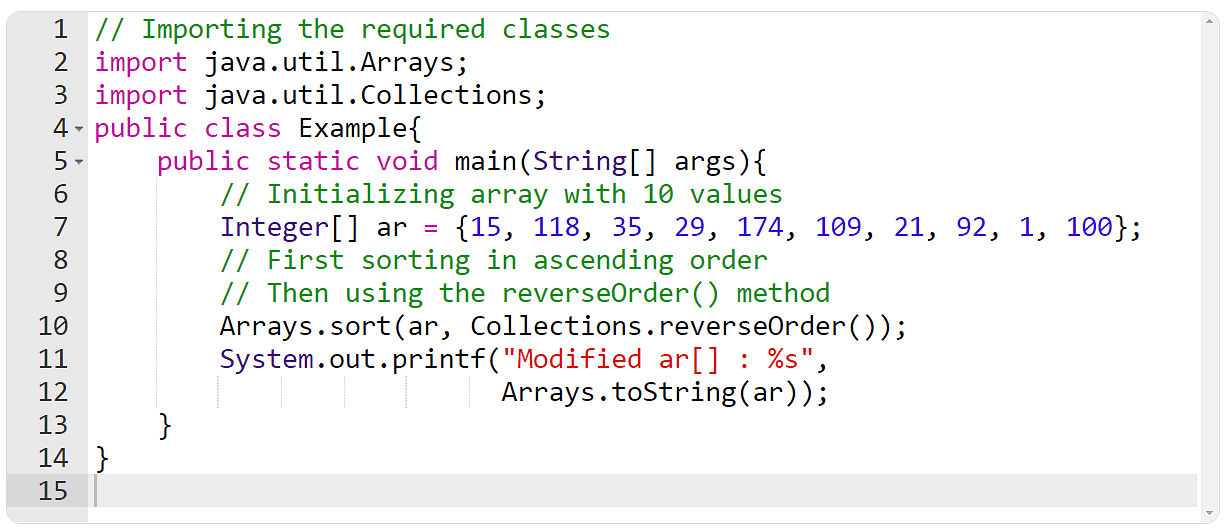

Instance: Type Subarray in Java
Subarray is not anything however part of a larger array. For example, if you are taking your ar array from the former examples, it comprises ten values. In case you type just a few components as an alternative of all the array, it is known as sorting a subarray. This may also be accomplished the usage of the overall syntax of the type() approach and offering the non-compulsory parameters from_index and to_index. While you type a subarray, the remainder of the weather stay unchanged. The under instance makes use of the similar ar array and types the subarray of the values from index 1 to 7 whilst retaining the values at index 0, 8, and 9 unchanged.
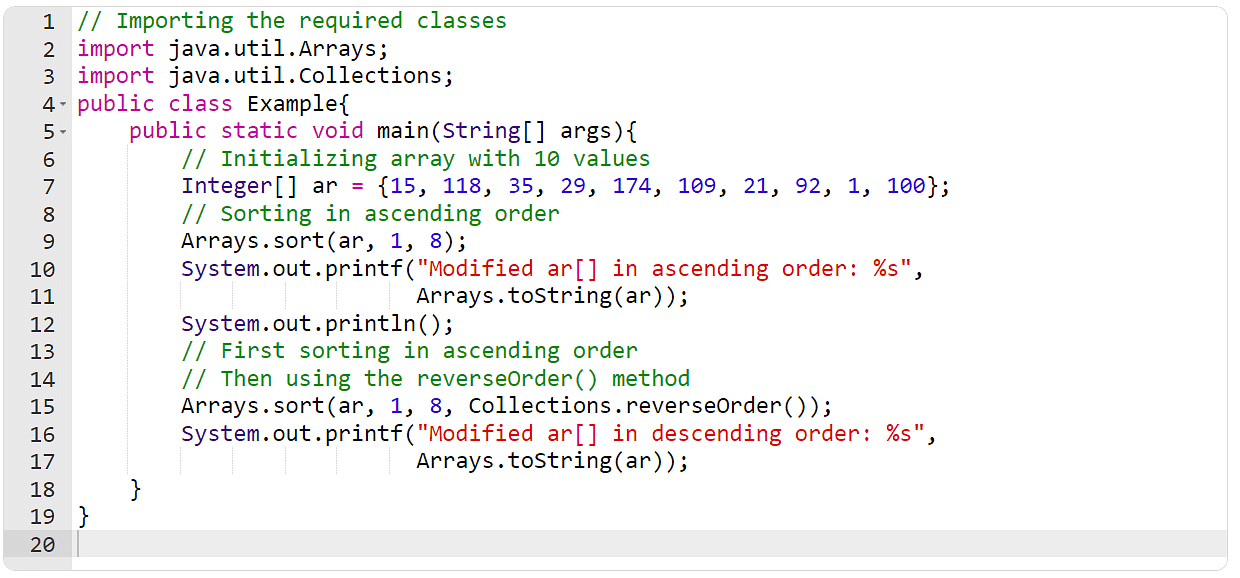

Instance: Type an Array of Strings in Java in Alphabetical Order
You’ll additionally use the type array in Java to type strings in alphabetical order. The under instance defines a string array and types it in each ascending and descending order.
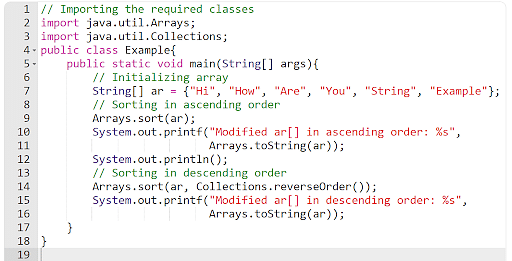

Instance: Type Array in Java With out The use of the Type() Way
You’ll additionally type an array in Java with user-defined strategies the usage of the comparator interface and for a loop. All it’s a must to do is outline the good judgment within the approach such that it’ll type the array. Please take a look at the under instance, the place you’ll have to type an array with out the usage of the Arrays.type() approach in Java.
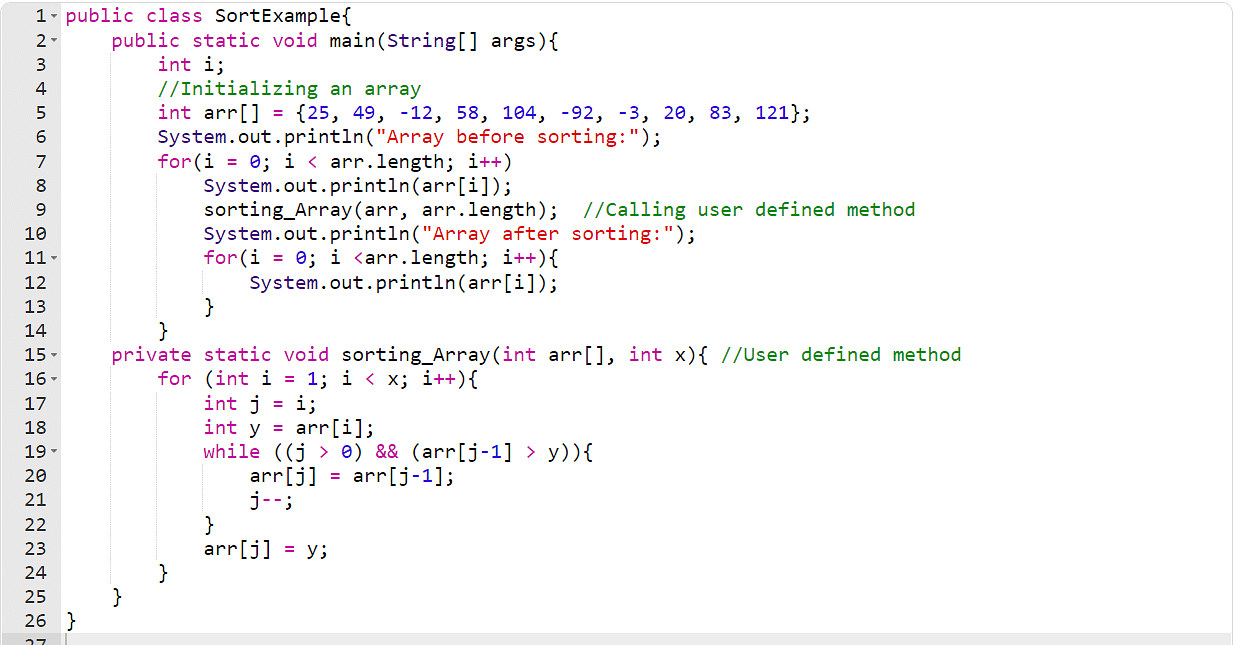
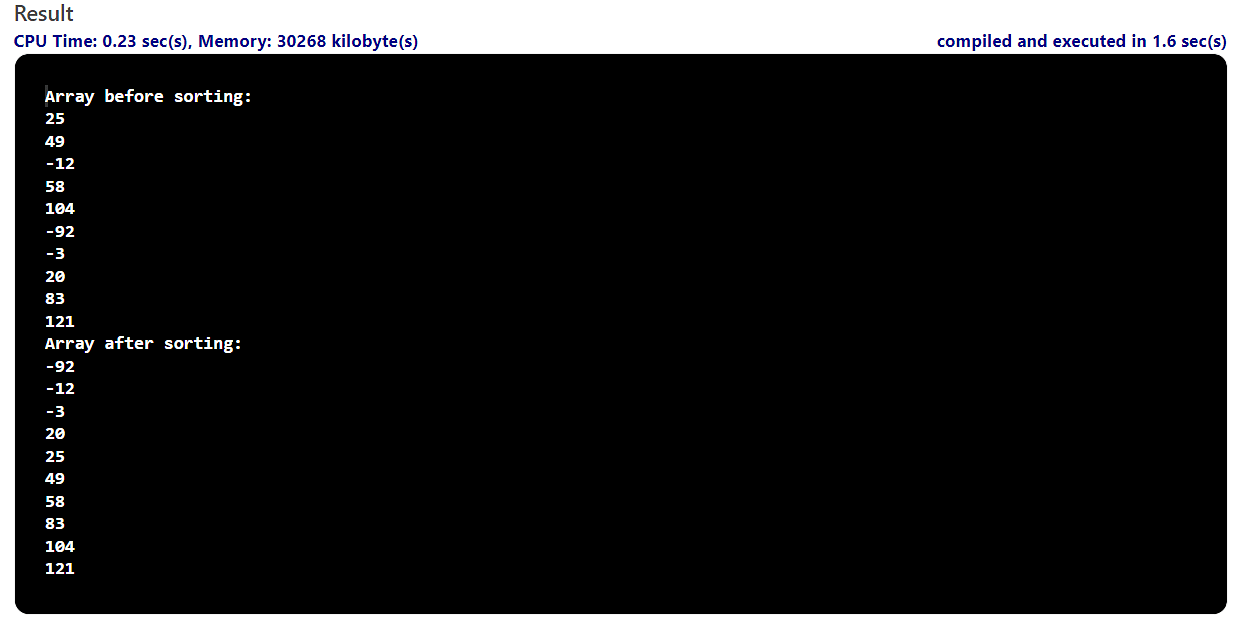
What Is the Distinction Between array.type() And assortment.type()?
Very similar to the Arrays elegance, the Collections elegance additionally supplies the type() approach. Alternatively, there’s a huge distinction between each strategies. The Arrays.type() approach helps primitive information sorts. Alternatively, the Collections.type() approach helps collections like ArrayList and LinkedList.
The use of For Loops
You probably have smaller arrays, you’ll be able to use for loops to accomplish sorting. Word, alternatively, that if the array measurement will increase, it complicates issues. You’ll use two for loops, one traversing the array from the beginning, and the second one for loop, embedded within the outer one, for traversing the following component.
for (initialExpression; testExpression; updateExpression) {
// frame of the loop
}
Conclusion
This instructional must lend a hand get to the bottom of any confusion in regards to the ‘type array’ think about Java. On the finish of the day, we see that sorting arrays is truly a easy idea in Java. You’ll find out about different such easy ideas by means of regarding Simplilearn’s Java instructional for freshmen.
If you wish to be informed extra about Java and different instrument building subjects, then take a look at Simplilearn’s Complete Stack Java Developer, designed with Caltech and is the very best program that will help you boost up your adventure as a instrument developer.
Do you’ve gotten any questions for us relating to Type Array in Java? Go away them within the feedback phase under, and our professionals gets again to you once they are able to.
Glad finding out!
supply: www.simplilearn.com












